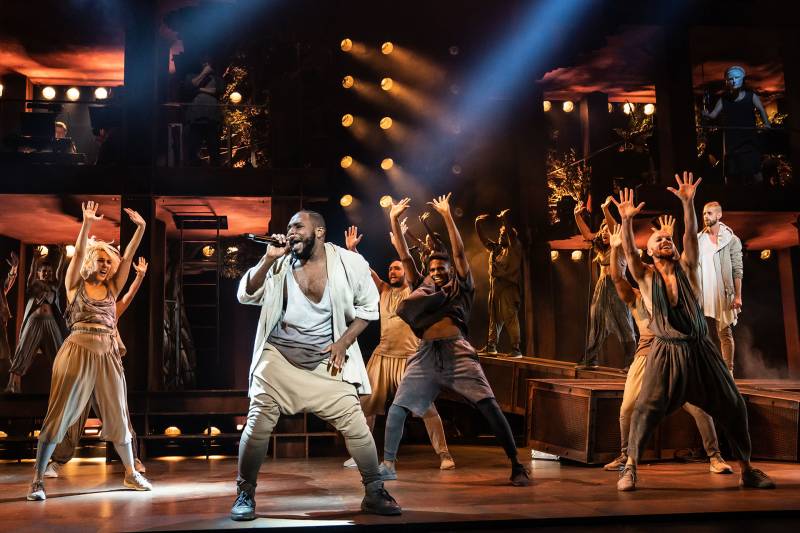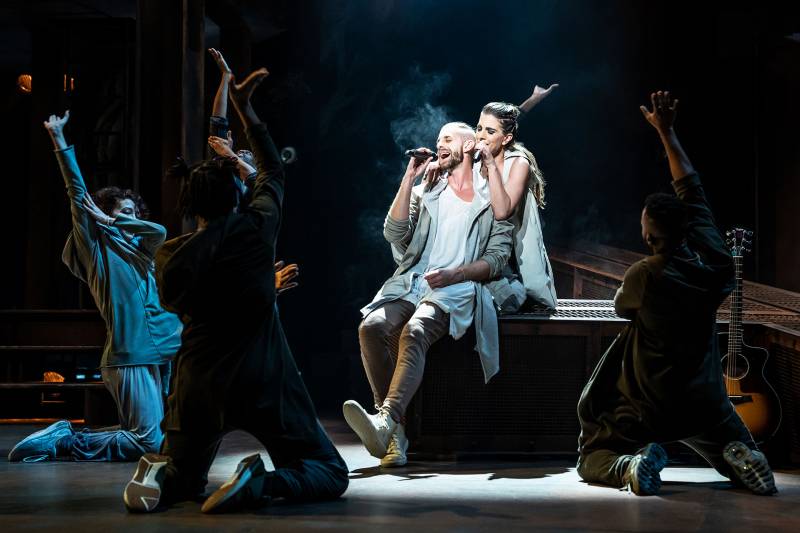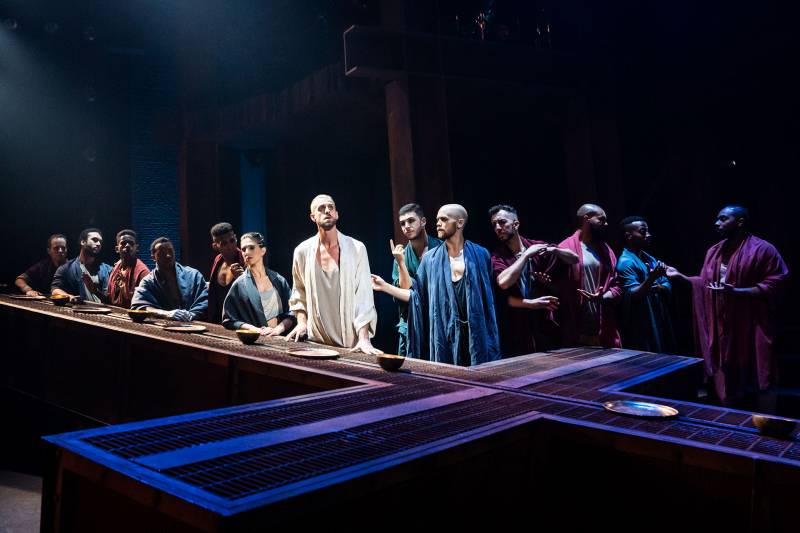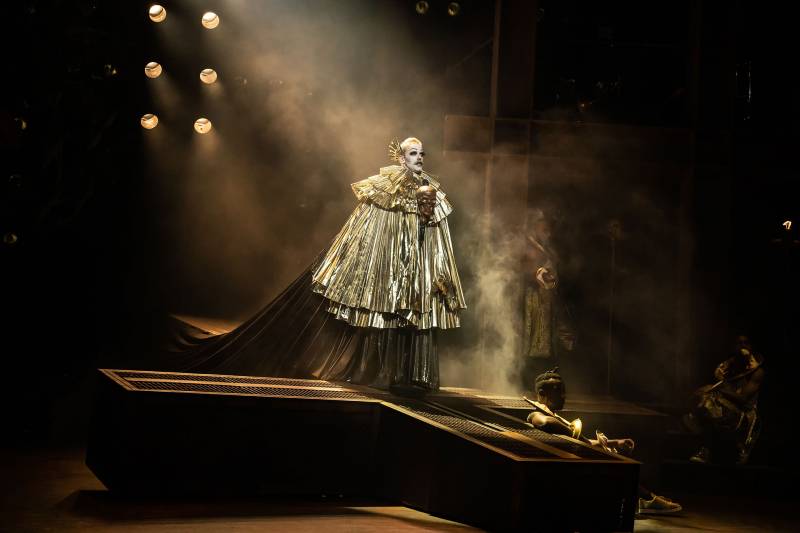We live in Anniversary Hell. Our cultural calendar revolves around the 30th anniversary of this album, the 10th anniversary of that movie, the 17th anniversary of this episode of this one show on this one network, all while new and relevant art continues to be made, and not given prominence, all over the city, constantly, every single day.
And so it was that I attended opening night at the Golden Gate Theater of the 50th anniversary tour of Jesus Christ Superstar on Wednesday, with one pointed question: What business does Jumpin’ Jesus Friggin’ Christ on a Pogo Stick Superstar have clogging up theaters in the year 2021?
I kept an open mind. I happen to like Jesus Christ Superstar, which launched Andrew Lloyd Webber’s career, and which reframes with period rock music the final stages of the life of Jesus, up to his crucifixion. It’s a musical with still-relevant themes: the cult of personality, the building up and knocking down of celebrity, the Madonna/whore complex, self-aggrandizing mob mentalities. Four years of Trump, alone, opens the door wide to a modern interpretation, a parable for our time.

Instead, this resurrected Jesus Christ Superstar simply updates the original, superficially. Jesus wears tight jeans, white sneakers and a man bun; Herod is a drag queen in heels, long eyelashes and a black-and-gold bodysuit; Jesus’ followers do TikTok body rolls in Joann Fabrics castoffs instead of Grateful Dead twirly dances. All of it has a very dance-for-grandma vibe: young, talented actors made to re-create the glory days of baby boomers for their personal edification, and a comforting illusion that what they once liked can still be cool.
Will this approach help Jesus Christ Superstar reach a new audience? I asked a 20-something afterward what they thought, and got a gamely, one-word “interesting.” As for satisfying older fans, a 60-something man, who’d loved the original production, fretted to me in the aisle afterward: “They got a lot of things wrong.”




